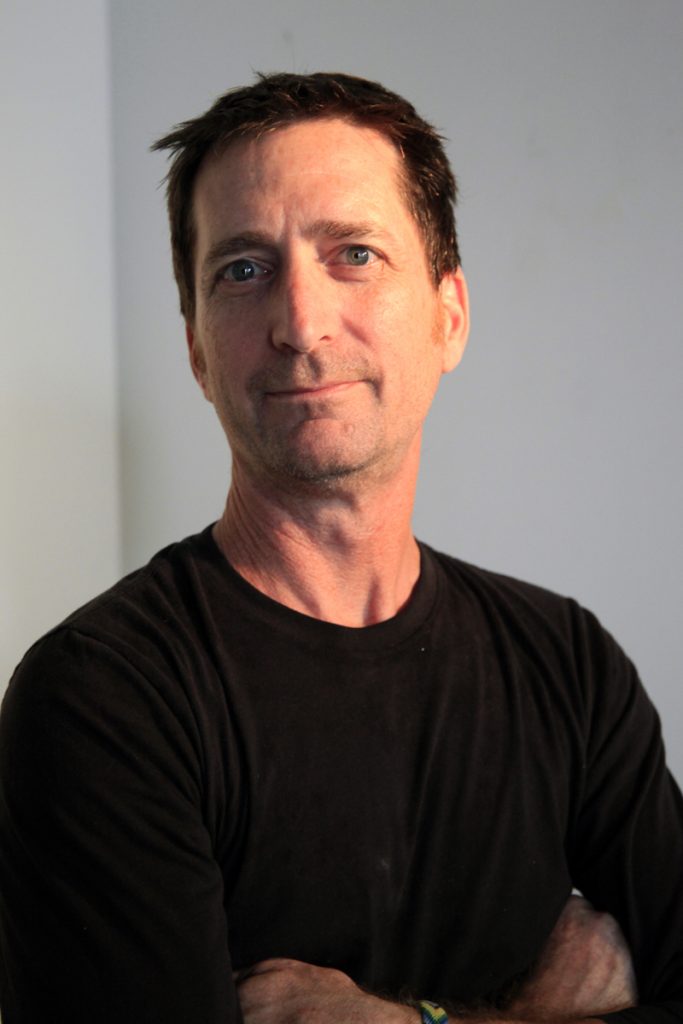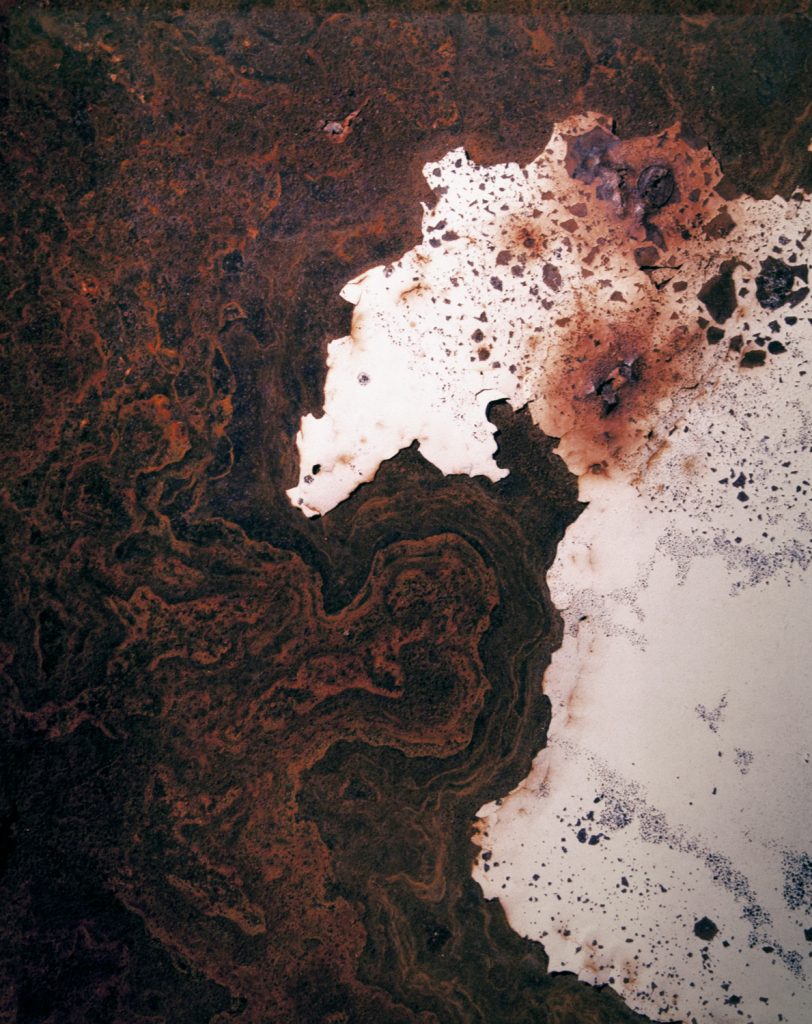
Artist Dan Frueh loves him some oxidation. The rustier, the better. In fact, rust—of all things—has become Frueh’s medium of choice. He’s drawn to the color, texture and nuance of how it changes over time. Specifically, blue rust. (We didn’t even know that was a thing.) The Kansas City Art Institute grad now owns The Trap Gallery where he often unveils his latest rust-riffic artwork. In fact, this Friday, Frueh is hosting a group show that is billed as a “celebration of oxidation,” says Frueh. “It’s called LOVE RUST, and this will be my eighth year doing this group show. On Friday, we’ll spotlight 17 artists whose work utilizes rust as their muse.” With so much rust dotting the landscape, he rarely has to go far to find it—but he often does. His all-time favorite pic is now 25 years old and helped transfix his oxidation fascination.

“Soon after moving to KC, some friends took me down to the West Bottoms to check out and gather art-making materials. I used the opportunity to explore the landscape with my camera. After processing the film and getting into the darkroom to make prints, I made a discovery that would change the course of my artistic life.
Blue rust.
I had not noticed it in the world. I only saw it in the print. Now I cannot help but see it everywhere. The photographic process revealed to me that rust is not a monochromatic substance. It has a range of colors that fascinates and intrigues me. One of the things I try to accomplish in my work is abstraction of the real. I like to take that which exists and remove it from its context, creating what appears to be an abstract image, but is very much rooted in the real world.
Soon after graduating, I took a job through FEMA to document homes in Iowa and Missouri damaged by the devastating floods of 1993. It was a great just-out-of-college job. It allowed me to travel and make photographs. In and around these flooded-out homes, I explored the environment and made photos for myself. On site at one of these jobs, I found what has become one of my favorite photos. It was just the side of an old washing machine, dragged outside and left to the elements.
What I love about this image is its complete lack of scale. It could be a satellite photo or an image of a petri dish. It is yin and yang, new and old, light and dark. It shows how nature inevitably takes back that which humans have sought to control. It sums up what fascinates me about photographing rust. It shows the sublime in the everyday world that is all around us.”


